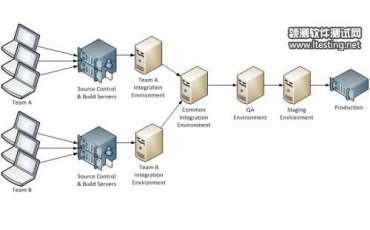oracle 使用杂记一
一直学习oracle 希望能和大家共同探讨问题 如有不对之处还请指出
index 种对null的使用
================================================================
有些情况可以用 " N/A " 代替 NULL
================================================================
8i 以上使用基于函数的index 可以用上 null
create table t (n number);
create index ind_n on t(n,1); // 用 t(n,'a') 更省空间
select v from t where n is null;
V
--------------------
lg
Execution Plan
----------------------------------------------------------
0 SELECT STATEMENT Optimizer=CHOOSE (Cost=3 Card=614 Bytes=6140)
1 0 TABLE ACCESS (BY INDEX ROWID) OF 'T' (Cost=3 Card=614 Bytes=6140)
2 1 INDEX (RANGE SCAN) OF 'IND_N' (NON-UNIQUE) (Cost=3 Card=614)
要记住用 CBO
I doesn't need query rewrite to make that leap, it is a "safe" operation.
==============================================================
null 可以在 bitmap index 中使用
==============================================================
或者象下面这样使用多列组合的index 方便使用index
create table t ( f_seq int, t_seq int, x char(1) );
create index t_idx on t(f_seq,t_seq);
select f_seq, t_seq from t where f_seq > 0 and t_seq is null;
Execution Plan
----------------------------------------------------------
0 SELECT STATEMENT Optimizer=CHOOSE
1 0 INDEX (RANGE SCAN) OF 'T_IDX' (NON-UNIQUE)
select f_seq, t_seq, x from t where f_seq > 0 and t_seq is null;
Execution Plan
----------------------------------------------------------
0 SELECT STATEMENT Optimizer=CHOOSE
1 0 TABLE ACCESS (BY INDEX ROWID) OF 'T'
2 1 INDEX (RANGE SCAN) OF 'T_IDX' (NON-UNIQUE)
===============================================================
表所占空间的大小
select segment_name, round(blocks*8/1024, 0) table_size from user_segments where segment_type='TABLE';
---- 你可以知道你的表的实际size (单位: M)
-----------------------------------------------------------------------------------------
数据字典表DBA_TABLES、ALL_TABLES、USER_TABLES
select table_name,initial_extent,next_extent,min_extents,max_extents,pct_increase
from user_tables;
-----------------------------------------------------------------------------------------
分析一对象实际使用的块
analyze table lg.t compute statistics;
分析完后就可以看一对象实际使用的块
select blocks,num_rows,empty_blocks,avg_space,avg_row_len
from dba_tables where owner='LG' and table_name='T';
select table_name, round(avg_row_len*num_rows/1024/1024, 0) data_size from user_tables;
---- 你可以知道表中大约的data size (单位: M)
-----------------------------------------------------------------------------------------
select count(distinct substr(rowid,1,15)) "how many use of block" from a;
这是看一个表真正使用了多少数据块 dba_tables 的 blocks 显示了 HWM 下不包含行的块的数目
-----------------------------------------------------------------------------------------
declare
l_total_blocks number;
l_total_bytes number;
l_unused_blocks number;
l_unused_bytes number;
l_LastUsedExtFileId number;
l_LastUsedExtBlockId number;
l_last_used_block number;
l varchar2(128);
t varchar2(128);
begin
l:=upper('&name');
select object_type into t from user_objects where object_name=l;
dbms_space.unused_space(
segment_owner =>USER,
segment_name =>l,
segment_type =>t,
partition_name => null,
total_blocks => l_total_blocks,
total_bytes => l_total_bytes,
unused_blocks => l_unused_blocks,
unused_bytes => l_unused_bytes,
last_used_extent_file_id => l_LastUsedExtFileId,
last_used_extent_block_id => l_LastUsedExtBlockId,
last_used_block => l_last_used_block );
dbms_output.put_line(RPAD(('total_blocks: '||l_total_blocks),40,' ')||'total_bytes: '||l_total_bytes);
dbms_output.put_line(RPAD(('unused_blocks: '||l_unused_blocks),40,' ')||'unused_bytes: '||l_unused_bytes);
dbms_output.put_line(RPAD(('last_used_extent_file_id: '||l_LastUsedExtFileId),40,' ')|| 'last_used_extent_block_id: '||l_LastUsedExtBlockId);
dbms_output.put_line('last_used_block: '||l_last_used_block);
end;
/
sequence
<< Oracle9i Database Administrator's Guide >> 20
if your application can never lose sequence numbers, then you cannot use Oracle sequences
and you may choose to store sequence numbers in database tables.
CREATE SEQUENCE // 需要的系统权限
create sequence lg_sequence
start with 1
increment by 1
order //保证每个序列值都比先前的大, ********在并行服务中有用
nocycle; //防止循环又回到初始值
NOCACHE NOORDER;
默认cache 为 20 直接 shutdown abort 后在内存中缓存的序列就会消失
startup后从上次shutdown以前的 sys.seq$ 的HIGHWATER 的值开始
最大值1.0E+27 1后面27个零
lg_sequence.nextval
lg_sequence.currval
alter sequence lg_sequence // alter sequence squ_1 increment by trunc(9999999/2);
increment by 997; //如果序列之前是2,这样一改就是999
//是逐渐在原有的基础上涨的
oracle 不支持复制 sequence
------------------------------- exp sequence --------------------------------------
sequences are objects -- just like a table, procedure, view, package, etc.
要exp sequence 那就 export a database or schema, that will get the sequences.
或者 select 'create sequence ' || sequence_name || ' start with ' || last_number+1 ||
';' from user_sequences where.....;
由于是杂记 想到什么就写的什么 可能有点乱 请大家多包涵





